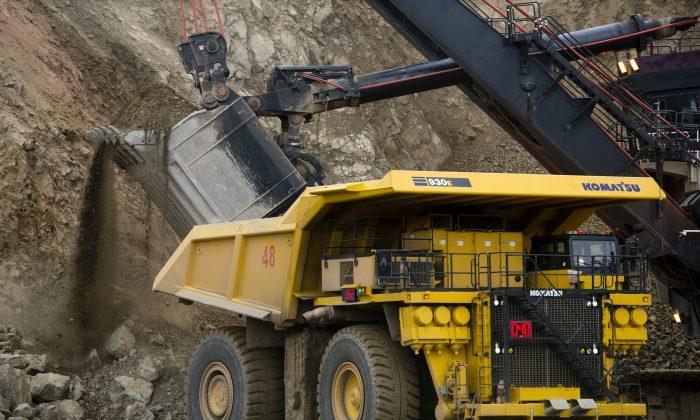Gold prices have fallen more than 20 percent year-to-date. In a column last month, I argued that the price of gold will rebound despite the recent selloff, as long-term demand and inevitable inflationary trends will push the commodity higher.
However, an eventual rebound in gold prices does not mean that gold mining firms are currently a good bet.
During the recent bull market for gold, gold miners have expanded production capacity and ramped up exploration. The mining industry is an incredibly capital intensive sector, and gold—which has been valued for as long as mankind has been in existence—has become scarcer and more difficult (costly) to mine and produce. Gold’s appreciation over the last decade has emboldened mining firms to increase capital expenditures, and a sudden collapse in gold prices over the last six months has caught miners completely off guard.
I argued that for many mining firms, the current price of gold approximates their production cost. If current prices don’t rise quickly, miners will lose money on unjustifiably expensive projects given current gold prices, scale back expansion of mines, and the industry will experience consolidation.
And if the second quarter earnings are any indication, the chickens have now come home to roost.
Toronto-based gold mining giant Barrick Gold Corp. reported a second-quarter loss of $8.6 billion, or $8.55 per common share, inclusive of $8.7 billion in after-tax one-time impairment charges related to writedowns regarding prior assumptions of future metal prices. In other words, Barrick has revised down the value of its assets based on expected future gold prices, an indication that the company expects future gold prices to be less stellar than previously thought.
Its shares (NYSE: ABX) actually rose last Wednesday following the earnings release. Why? The first reason is that investors largely expected the loss and writedown. The bigger reason is that Barrick had already taken active measures to reduce costs, scale back capital spending, and lay off workers. During the last quarter, the mining company actually decreased its costs and increased production, while slashing its dividend by 75 percent. To pull off that combination is an impressive feat.
“We have reduced 2013 budgeted capital and costs by about $2.0 billion which has offset the cash flow impact of the drop in gold and copper prices that has occurred this year,” said Barrick CEO Jamie Sokalsky in a statement on Aug. 1. “We have reduced all-in sustaining cost guidance by about $100 per ounce this year from levels which are the lowest of our peers.”
In June, the company already announced a 30 percent reduction in corporate staff, mostly at its headquarters in Toronto. In addition, Barrick listed several mines it plans to divest or suspend operations.
Colorado-based Newmont Mining Corp. (NYSE: NEM) reported a non-cash impairment charge during Q2, resulting in a $2 billion net loss, or $4.06 per share. Newmont also cut its dividend to 25 cents per share last month.
Similar concerns over margins were voiced by Toronto-based Kinross Gold Corp. (NYSE: KGC), which also stated that it would focus on reducing costs and increasing cash flows. It has put on hold plans to proceed with an expansion at its Tasiast mine in remote Mauritania until at least 2015.
Stifel Nicolaus analysts estimated that major gold producers—Kinross, Barrick, and Newmont—would lose over 30 percent of current production if gold prices decreases to $1,000 per ounce, according to Canadian daily Financial Post. Year-to-date, shares of Kinross have declined 48 percent, shares of Barrick have decreased by 52 percent, and Newmont is down 38 percent.
Frank Yu is a contributor to the Epoch Times.





Friends Read Free